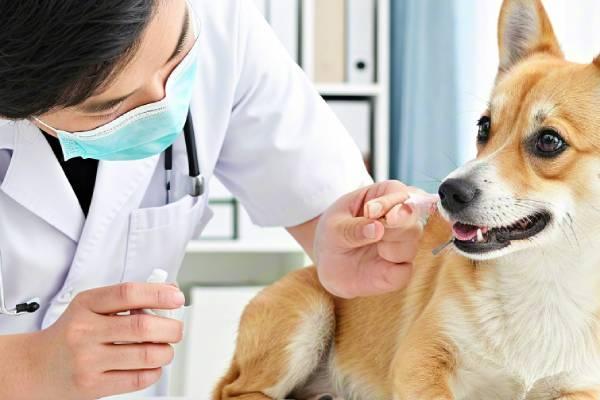How to Treat and Prevent Flea Infestations
Flea infestations can affect pets, homes, and outdoor areas, causing discomfort and potential health risks. Effective management requires a multi-step approach to eliminate existing fleas and prevent future outbreaks.
1. Treating a Flea Infestation
Step 1: Treat Your Pets
Use Flea Medication: Apply veterinarian-recommended topical treatments, oral medications, or flea collars containing ingredients like imidacloprid, fipronil, or selamectin.
Flea Baths: Bathe pets with flea-specific shampoos to kill adult fleas.
Flea Comb: Use a fine-toothed flea comb daily to remove fleas and eggs from fur.
Step 2: Treat Your Home
Vacuum Thoroughly: Vacuum carpets, upholstery, pet bedding, and crevices daily. Dispose of the vacuum bag/contents immediately.
Wash Fabrics: Wash pet bedding, blankets, and human bedding in hot water (>50°C/122°F) weekly.
Insecticide Sprays: Use EPA-registered flea sprays or foggers containing insect growth regulators (IGRs) like methoprene or pyriproxyfen to kill eggs and larvae. Focus on dark, humid areas (e.g., under furniture).
Diatomaceous Earth: Apply food-grade diatomaceous earth to carpets and cracks to dehydrate fleas (safe for humans/pets when used correctly).
Step 3: Treat Outdoor Areas
Yard Sprays: Use outdoor insecticides labeled for fleas in areas pets frequent (e.g., under decks, shaded spots).
Mow Lawns: Keep grass short and remove debris to reduce flea habitats.
Step 4: Monitor and Repeat
Flea life cycles last 2–3 weeks. Repeat treatments for at least 4 weeks to break the cycle (egg → larva → pupa → adult).
2. Preventing Flea Infestations
For Pets
Year-Round Prevention: Use monthly flea preventatives (e.g., topical treatments, chewables) even in colder months.
Regular Grooming: Brush pets frequently and check for fleas, especially after outdoor activities.
Limit Wildlife Access: Discourage stray animals or wildlife (e.g., raccoons, rodents) from entering your yard.
For Your Home
Clean Regularly: Vacuum floors and furniture weekly.
Seal Entry Points: Block gaps in doors/windows to prevent fleas from hitchhiking indoors.
Use Preventative Sprays: Apply natural deterrents like diluted cedar oil or lemon spray on pet bedding (avoid use on cats).
For Your Yard
Nematodes: Apply beneficial nematodes (microscopic worms) to soil; they feed on flea larvae.
Sunlight Exposure: Trim vegetation to allow sunlight, which kills flea eggs and larvae.
3. Natural Remedies (Supplementary Options)
Essential Oils: Diluted lavender, eucalyptus, or neem oil can repel fleas (avoid using on cats without vet approval).
Salt or Baking Soda: Sprinkle on carpets, wait 12 hours, then vacuum to dehydrate fleas.
Herbal Flea Collars: Use collars infused with citronella or rosemary.
4. When to Call a Professional
If infestations persist after 4–6 weeks of treatment.
For severe home or yard infestations, hire a licensed pest control service.
Key Tips for Success
Treat all pets in the household simultaneously.
Combine chemical and non-chemical methods for maximum efficacy.
Address fleas promptly to avoid secondary issues like tapeworms or allergic dermatitis.
By following this integrated approach, you can eradicate fleas and create a hostile environment for future infestations. Consistency is critical—fleas are resilient, but thoroughness ensures long-term control.
How to Kill Stubborn Fleas: Advanced Strategies
Stubborn flea infestations often persist due to incomplete treatment of eggs, larvae, or hidden habitats. To eradicate them, target all life stages (egg, larva, pupa, adult) and adopt a rigorous, multi-pronged approach.
1. Intensify Pet Treatments
Fleas often rebound due to untreated pets acting as hosts.
Prescription-Strength Medications:
Ask your vet for oral flea preventatives (e.g., Spinosad, Fluralaner) that kill fleas within hours and last 1–3 months.
Use topical treatments with dual action (e.g., Frontline Plus, Revolution Plus) that kill adults and disrupt egg development.
Frequent Bathing:
Bathe pets weekly with pyrethrin-based shampoos (safe for dogs; avoid cats unless labeled).
Follow with a flea comb dipped in soapy water to trap remaining fleas.
Environmental Decontamination:
Immediately wash collars, leashes, and bedding in hot water after outdoor exposure.
2. Overhaul Indoor Treatment
Stubborn fleas thrive in carpets, upholstery, and hidden cracks.
Insect Growth Regulators (IGRs):
Spray IGR products (e.g., NyGuard, Precor) on floors, furniture, and pet areas. These prevent eggs/larvae from maturing for 6–12 months.
Combined Insecticides:
Use aerosol bombs or sprays containing adulticides (e.g., permethrin) + IGRs (e.g., methoprene) to kill all life stages.
Focus on high-risk zones: under furniture, baseboards, and pet sleeping areas.
Heat Treatment:
Steam clean carpets and upholstery (heat >95°F/35°C kills larvae and eggs).
Diatomaceous Earth (DE):
Apply food-grade DE to carpets, cracks, and pet bedding. Leave for 24–48 hours before vacuuming (wear a mask to avoid inhalation).
3. Yard and Outdoor Eradication
Outdoor fleas can re-infest treated pets and homes.
Nematode Application:
Spray beneficial nematodes (Steinernema carpocapsae) in shaded, damp soil. They devour flea larvae within 24–48 hours.
Granular Insecticides:
Spread flea-specific granules (e.g., Talstar PL) in lawns, under decks, and garden beds. Water lightly to activate.
Sunlight and Dryness:
Trim overgrown vegetation and remove debris to expose flea habitats to sunlight, which kills eggs.
4. Break the Flea Life Cycle
Flea pupae can lie dormant for months, resisting treatments.
Repeat Treatments Religiously:
Treat pets, homes, and yards every 2 weeks for 8–12 weeks to disrupt the life cycle.
Vacuum Aggressively:
Vacuum daily for 3–4 weeks. The vibrations stimulate dormant pupae to hatch, exposing them to insecticides.
Seal and discard vacuum bags immediately after use.
5. Address Insecticide Resistance
Some fleas develop resistance to common chemicals.
Rotate Products: Alternate between treatments with different active ingredients (e.g., fipronil → imidacloprid → selamectin).
Consult a Veterinarian: For severe cases, vets may recommend prescription-only insecticides (e.g., Bravecto, NexGard).
6. Natural Remedies for Stubborn Fleas
For those avoiding chemicals:
Salt + Baking Soda Combo: Mix 1:1, sprinkle on carpets, wait 12 hours, then vacuum. Dehydrates eggs and larvae.
Lemongrass Spray: Mix 10 drops lemongrass oil + 1 cup water. Spray on pet bedding (avoid direct application to cats).
Boric Acid: Apply lightly to carpets (toxic if ingested; keep pets away until vacuumed).
7. When to Call Professionals
If fleas persist after 8 weeks of intensive treatment:
Pest Control Services: Professionals use industrial-strength insecticides and heat treatments.
Flea-Sniffing Dogs: Some companies deploy dogs to locate hidden infestations.
Key Takeaways
Simultaneous Treatment: Treat pets, indoors, and outdoors at the same time.
Persistence: Flea pupae are nearly indestructible—stay consistent for 2–3 months.
Prevent Reinfestation: Continue monthly preventatives and yard maintenance.
Stubborn fleas demand relentless effort, but with this systematic approach, even the toughest infestations can be eradicated.
推荐本站淘宝优惠价购买喜欢的宝贝:
本文链接:https://www.jinbel.cn/post/9712.html 非本站原创文章欢迎转载,原创文章需保留本站地址!


 微信支付宝扫一扫,打赏作者吧~
微信支付宝扫一扫,打赏作者吧~
